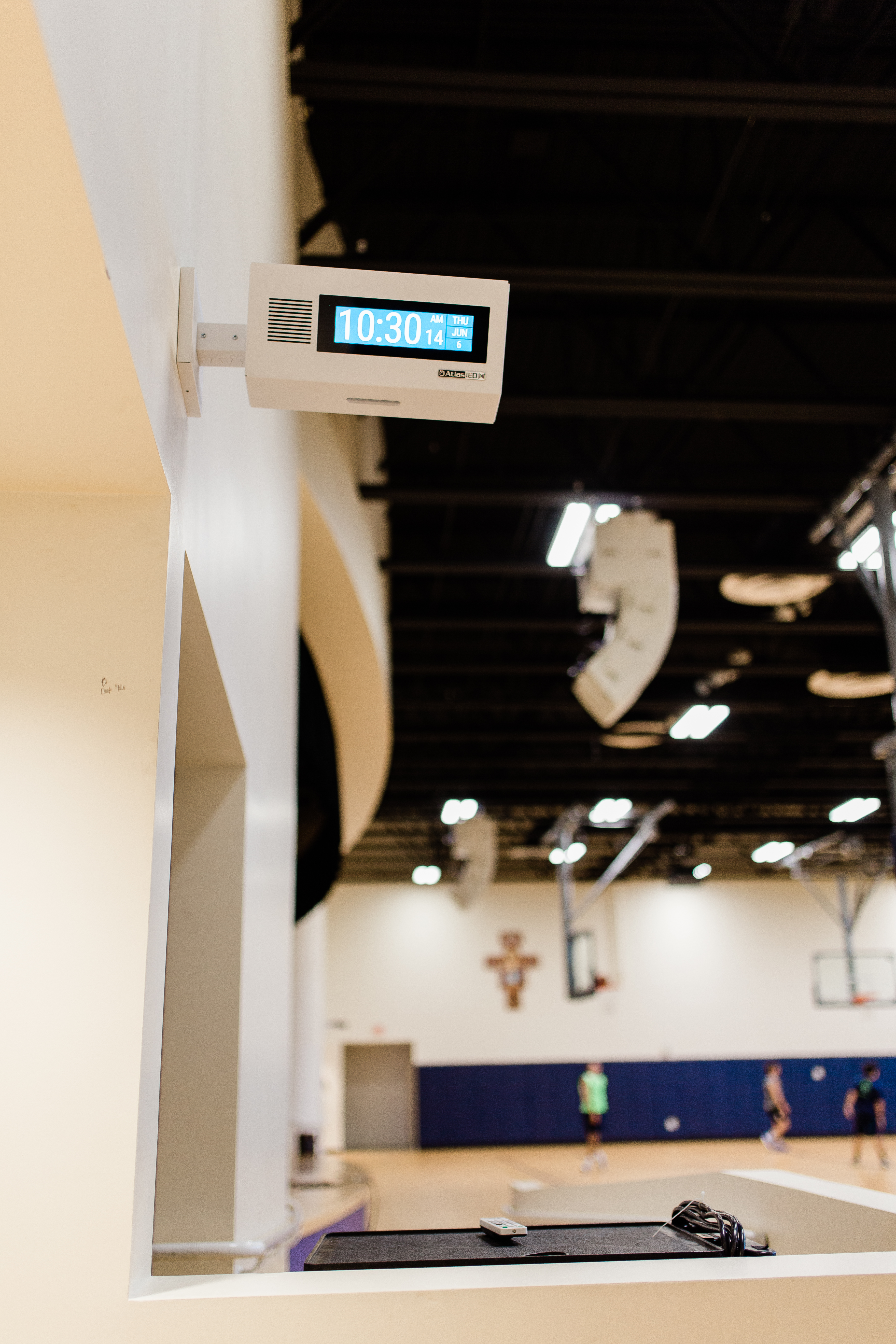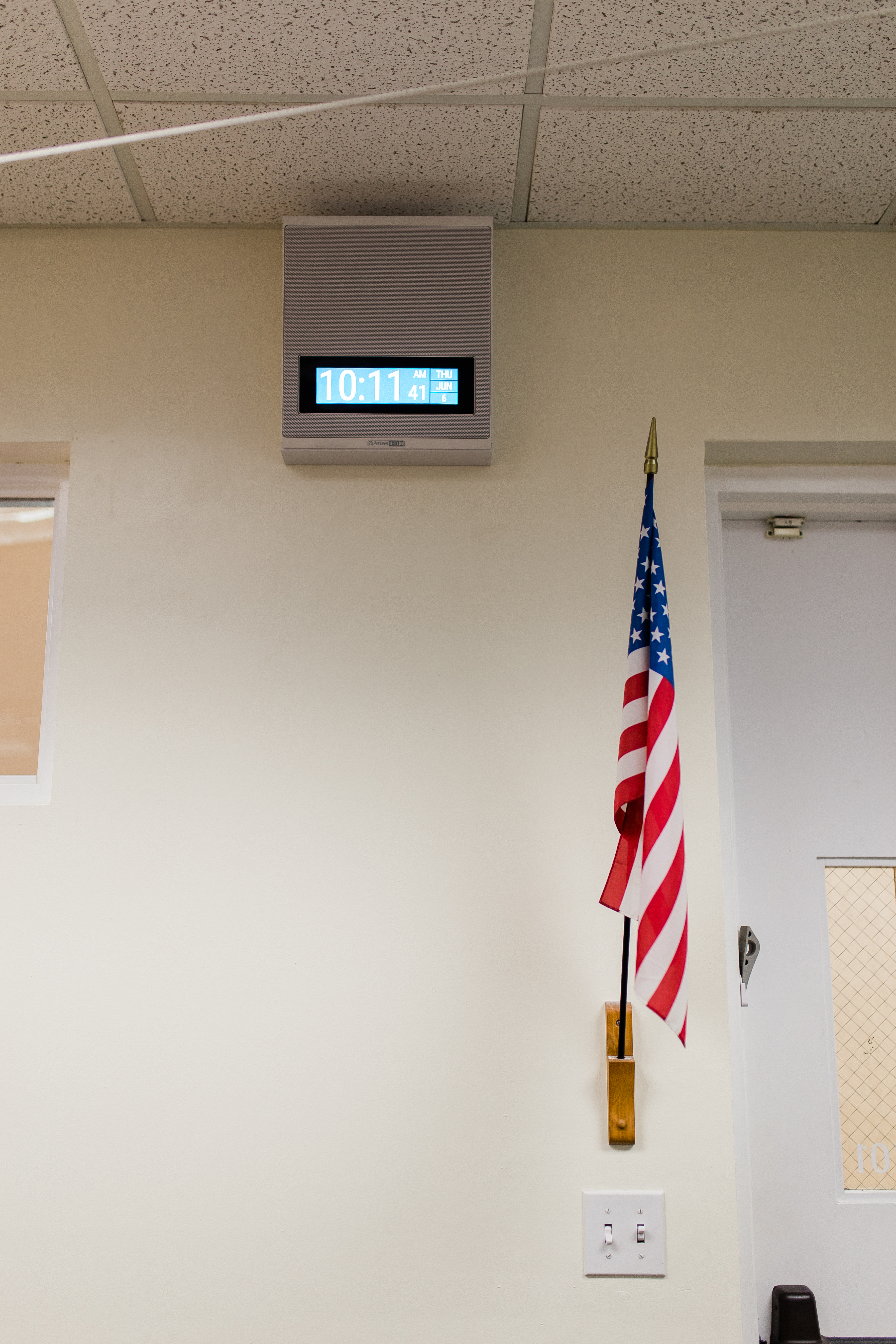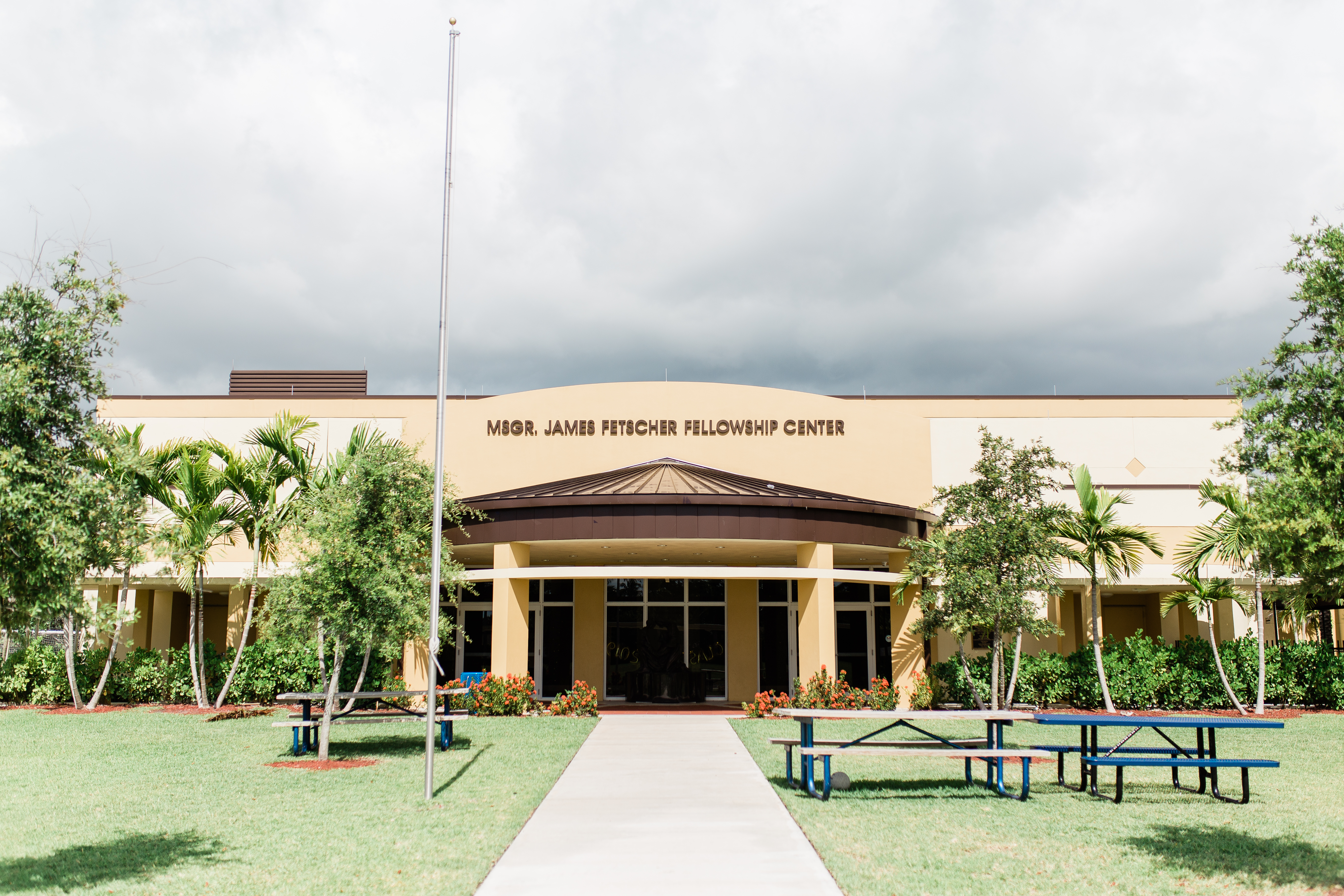A stalwart of traditional Catholic education, St. Louis Covenant School is also preparing students for 21st century success. A robust technology program is helping to propel the school forward, and driving the strategy is David Bustamante, St. Louis’ director of technology. For Bustamante, advanced digital tools are essential campus resources. The school’s iPad program for its 500 students embodies this approach.
To support the school’s tech-forward mission and update intercom functionality, Bustamante commissioned the integration firm AVIT Professionals to install a decentralized mass communications system. The solution needed to be network-based but offer rock-solid reliability and two-way communications during an emergency scenario. Bustamante also wanted a system that would be easy to scale, easy to use, and provide precise audio intelligibility. With those requirements in mind, AVIT Professionals specified the AtlasIED GLOBALCOM.IP system. Christian Lugaro, president of AVIT Professionals, says phase one of the integration is complete. The school’s system currently includes 57 zones, 50 IP-based speakers, 7 zone controllers, 21 horns, and 14 tile speakers.
New Tools for a New Era
While the previous intercom system “got the job done,” Bustamante knew there was a more agile approach to paging. He wanted the ability to “reach the entire campus—and anyone on campus—at any point in time,” he said. “Especially for us, here in Miami, we’re not too far from the Marjory Stoneman Douglas High School in Parkland.” Even before that tragedy occurred, hurricanes, lightning, and other weather emergencies keep school officials on high alert.

One of Bustamante’s concerns with the analog intercom system was ensuring each and every speaker was actually working. “The only way I could know if there was a problem was literally going to each speaker, standing there, and testing it myself,” he recalled.
With the new AtlasIED system, a user can see everything online, instantly. “Through the interface I can see which devices are active,” Lugaro said. “I can see if any devices are having issues or aren’t firing. The GLOBALCOM controller will show you everything, and it even gives a log of activity.”
Scalable and Expandable
Lugaro stated that GLOBALCOM.IP can work for any installation size, and it is “fluid” and easy to scale if new features are required in the future. Expansion is streamlined; there are no extraneous steps or time-consuming guesswork. The integrator can connect additional devices to the network and activate them via software. It’s an all-in-one, IP-based approach to interoperability that unifies digital audio, paging, intercom, and emergency messaging on one network.
Phase One
In a school lockdown, every second matters. So, in the first stage of the St. Louis Covenant School project, Bustamante wanted the ability to communicate across every medium in case of an emergency. “We want the process to be as simple as pushing a button to send a text message out to all staff members,” he said. At the same time a text is sent, the emergency message would also be visible on all clocks. The team can announce the message audibly and display it visually, making it clear that an emergency scenario is underway.

“If it’s a lockdown, or another event, we can alert to a blue code, red code, green, and so on, to establish a two-way communication,” said Bustamante. Teachers will then be expected to respond, confirming they are safe. If first responders arrive, and only 25 of 30 teachers have replied, the system can help locate the rest. “Now we will be able to tell [first responders] exactly where to go,” he explained.
Network Realities
The new communications system sits on the school’s main network. “We’re integrated with the phone system,” said Lugaro. “You need Layer 2 switches with multicast enabled for this solution to work. If the network is configured correctly, the bandwidth this solution requires is minimal,” he said.
Lugaro prefers the flexibility of new decentralized systems, like the GLOBALCOM.IP, though a robust infrastructure is required. He recommends conducting a thorough network assessment. “Before launching any type of system like this, you need to check the details,” Lugaro said. “See if the network is set up correctly. You may find a node giving out IP addresses that can delay your install or a switch that is not configured properly. Get to know their phone systems, understand their network. Once you get a good take on the infrastructure, you may find you will have to make adjustments to the network—for example, enabling multicast on the network switch. Once you’ve got that, it’s really just putting the GLOBALCOM.IP server in, and then start updating their devices.”
Growing Trend
Decentralized architecture is useful for a mass notifications system because “there are so many different aspects to it,” said Lugaro. Notifications can apply to weather emergencies, safety, event updates, messages from the principal, and more. “In phase one,” he stated, “we started with safety in mind, but the goal is to get the school to true mass notification, which is notification by phone, notification by computer, and notification via digital signage installed in the school.”
IP-based systems also offer schools enhanced scalability and budget flexibility. With the AtlasIED system, it’s easy to add another endpoint or zone when the time is right. “It’s so easy to do that it isn’t pricy for the school,” Lugaro said. “There are a lot of things that they wanted to do that they couldn’t fit in their budget right now, but they can over time.”
For Whom the Bell Tolls
Beyond its safety and mass communications features, the AtlasIED system also allows for audio personalization. For example, a kindergarten teacher with nap time or quiet time that overlaps with a class bell ring can avoid that disruption by essentially muting the bell in their class. “We are going to put in a very customized bell schedule,” said Bustamante. Because St. Louis Covenant School also shares some spaces with its associated Catholic church, the system can prevent speakers playing the morning bell in the middle of a prayer event.
The Way Forward
An enduring interest in AV, his teaching background, and years spent working at his uncle’s company, an internet service provider, are skills that make Bustamante uniquely qualified to meet modern campus challenges. To him, audiovisual technology that can be managed like any other network application makes sense. Bustamante is establishing himself as a leader in a dynamic, UX-oriented age where “AV” and “IT” are less partitioned. “I worked more on the networking side, but I’ve always been into AV,” he said. “Honestly, that’s my generation. When you grow up with electronics, the sensibility is,‘Just give it to me, I’ll figure it out.’ I really believe this is the way forward.”

